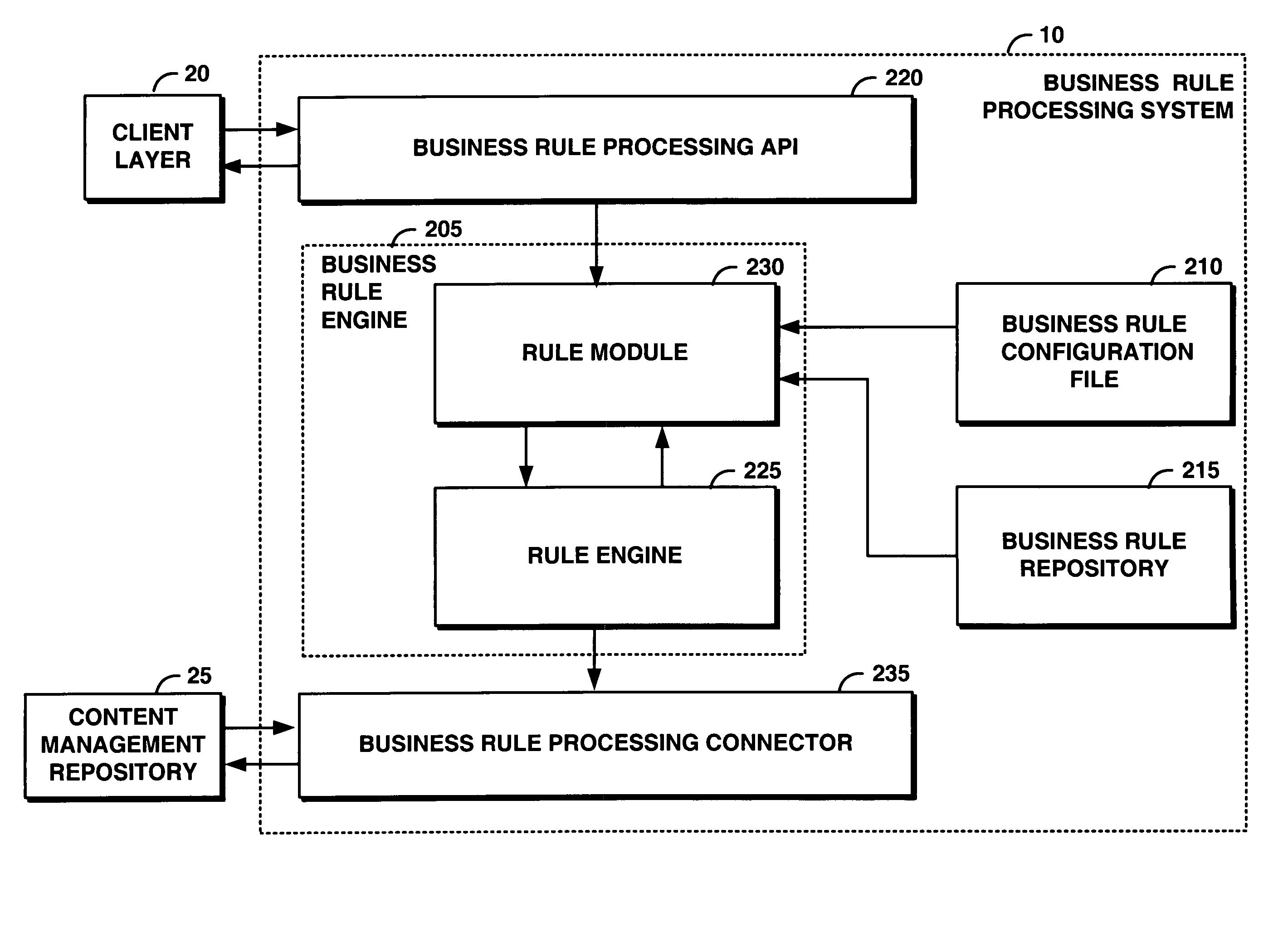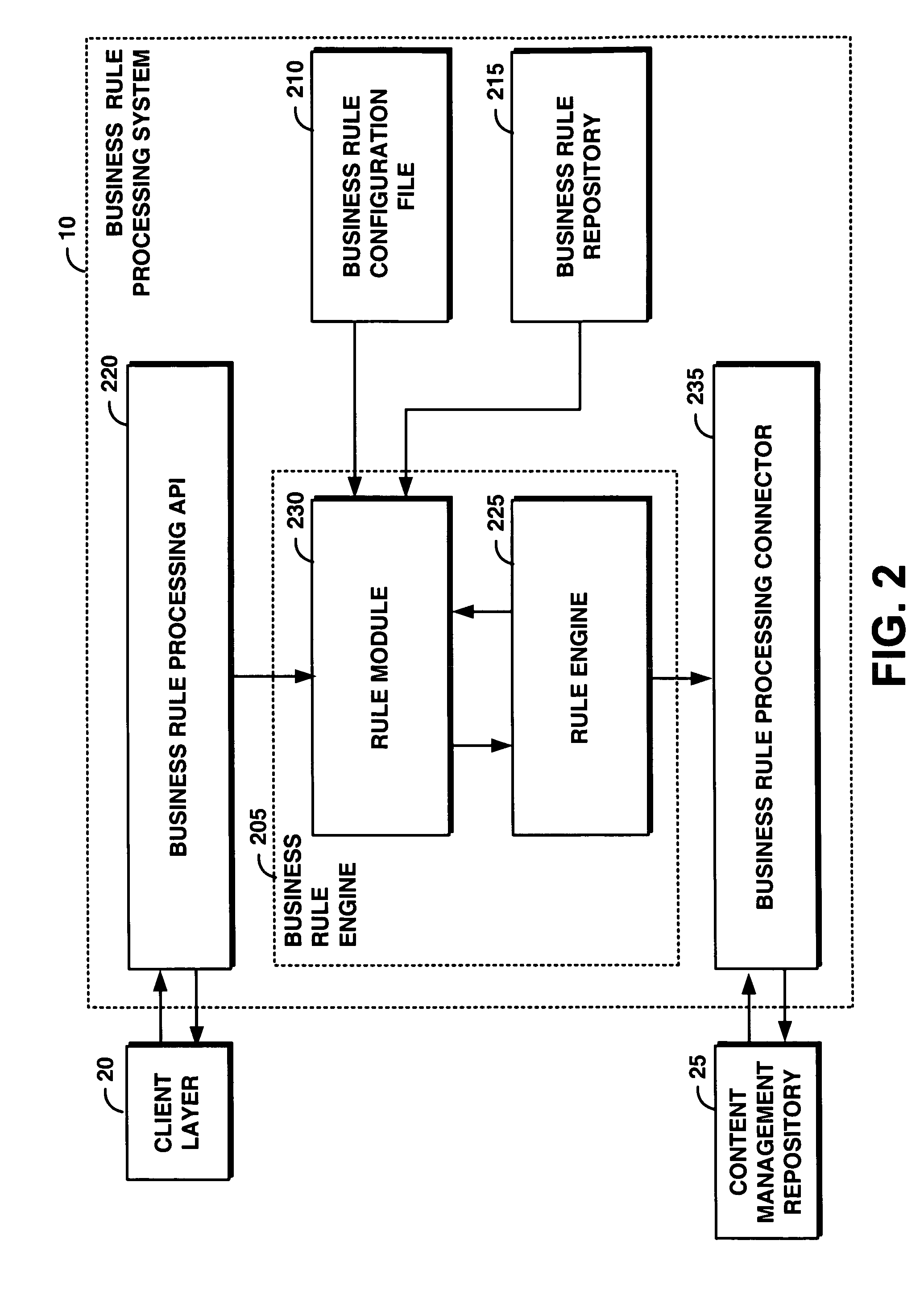System and method for automatically processing dynamic business rules in a content management system
- Summary
- Abstract
- Description
- Claims
- Application Information
AI Technical Summary
Benefits of technology
Problems solved by technology
Method used
Image
Examples
Embodiment Construction
[0044] The following definitions and explanations provide background information pertaining to the technical field of the present invention, and are intended to facilitate the understanding of the present invention without limiting its scope:
[0045] Business Rule: A statement defining or constraining some aspect of a business. The business rule is intended to assert business structure or to control or influence the behavior of the business.
[0046] HTML (Hypertext Markup Language): A standard language for attaching presentation and linking attributes to informational content within documents.
[0047] XML: extensible Markup Language. A standard format used to describe semi-structured documents and data.
[0048]FIG. 1 portrays an exemplary overall environment (a content management system 100) in which a system, a computer program product, and an associated method (the business rule processing system or the “system 10”) for automatically processing dynamic business rules in a content mana...
PUM
 Login to View More
Login to View More Abstract
Description
Claims
Application Information
 Login to View More
Login to View More - R&D
- Intellectual Property
- Life Sciences
- Materials
- Tech Scout
- Unparalleled Data Quality
- Higher Quality Content
- 60% Fewer Hallucinations
Browse by: Latest US Patents, China's latest patents, Technical Efficacy Thesaurus, Application Domain, Technology Topic, Popular Technical Reports.
© 2025 PatSnap. All rights reserved.Legal|Privacy policy|Modern Slavery Act Transparency Statement|Sitemap|About US| Contact US: help@patsnap.com



